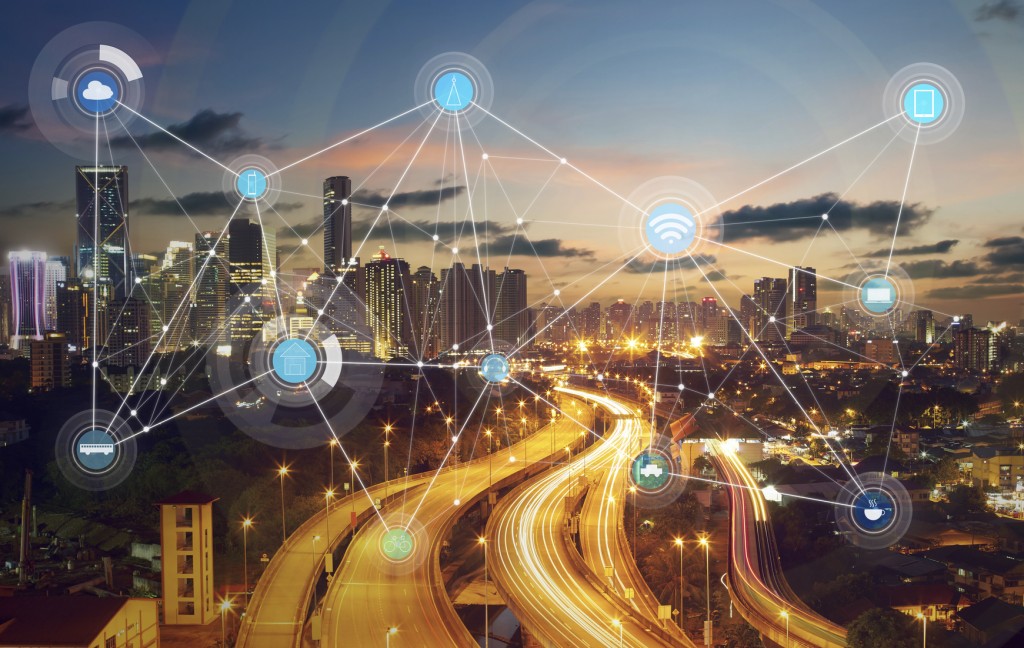This blog post is an excerpt from GovLoop’s recent guide Your Questions Answered: The Internet of Things in Government. Download the full guide here.
GovLoop talked to Sokwoo Rhee, Assistant Director of Cyber-Physical Systems Program at NIST, about projects developed through the Global City Teams Challenge (GCTC), how IoT has changed and where it is going.
Rhee said he divides the IoT landscape into three sectors. The first sector is consumer applications, which includes items like Fitbits or other wearables. The second is industrial applications, such as factory automation and productivity improvement. The third is public-sector applications, including smart city technologies.
GCTC fits into the third sector. The program brings together local governments, industries, nonprofits and academics into “action clusters.” These teams develop IoT projects that have quantifiable goals, such as reducing the average commute time in a city by 35 percent or decreasing the level of air pollution by 20 percent.
Rhee said that each team works with at least one city and three to five technology providers to implement its project idea. The most recent phase of GCTC had around 90 teams from 14 countries, working in 120 cities with around 300 technology providers. Almost 2,000 people attended the GCTC Expo in June 2016, making it one of the largest smart city events in the country.
The projects cover a wide array of issues, including transportation and public Wi-Fi. For example, when implementing autonomous vehicle projects, other issues arise: How do you ensure that the vehicles are taking the best possible route? How can you spread the vehicles across the city so there isn’t a traffic jam? A project based in Columbus, Ohio worked to address those issues.
Another project, LinkNYC, worked to replace phone booths in New York City with structures that provide free Wi-Fi, device charging and phone calls. The project generates revenue through advertising. Air-quality monitoring, water management, crime prediction and disaster relief are also popular projects, Rhee said.
The variety of projects at the expo shows how much IoT has changed over the past few years.
“A couple of years ago, a lot of projects were just ideas, and the focus was on whether they were even possible. Today, nobody really asks whether IoT and smart cities are feasible. We know that it’s possible. Now, it’s more about how can we deploy this,” Rhee said.
Another major change is the growing involvement from municipal and local governments. In the past, IoT was primarily a project by technology providers, but now cities are taking greater leadership roles. In addition, by partnering with the private sector, cities can now implement new projects without a large financial commitment.
“For example, universities are working very closely with cities, and a lot of universities already have some kind of funding,” said Rhee. “A city’s role in that case is providing the venue where a university can test their research and create the real benefit.” A similar move is happening with private industries. “It’s not just about technology anymore; the companies are actually creating new models. They’re not selling only the products anymore. They’re offering the whole solution and business model, so cities can adopt them without too much effort up front,” he said.
Government agencies have shown greater interest in IoT and smart cities, but the majority of projects are one-off endeavors, customized to individual cities. In the future, Rhee sees IoT focusing more on scalable and replicable models for deployment: “There are about 19,000 cities in the United States alone, and the majority of those cities do not have either the resources or technical expertise to take on the major smart cities projects.”
Rhee said there will be a focus on replication of successful solutions and economies of scale, and NIST
in particular will work on developing systems of measurement. He explained why this was important: “If you want to replicate any program, the first question the cities are going to ask is, ‘What is the impact?’ So you have to understand what the investment is and what the outcome is. There’s a lot we can do to improve the measurement of the impact.”
For anyone hoping to implement IoT programs, Rhee recommends thinking about the application and benefits of such a program first.
“For the last 20 years, the IoT industry has worked in the opposite direction, starting with the technology development without understanding what the application is. That time is over,” he said.
In the end, smart cities are about improving the lives of citizens, and the shifts in public-sector IoT reflect that.
